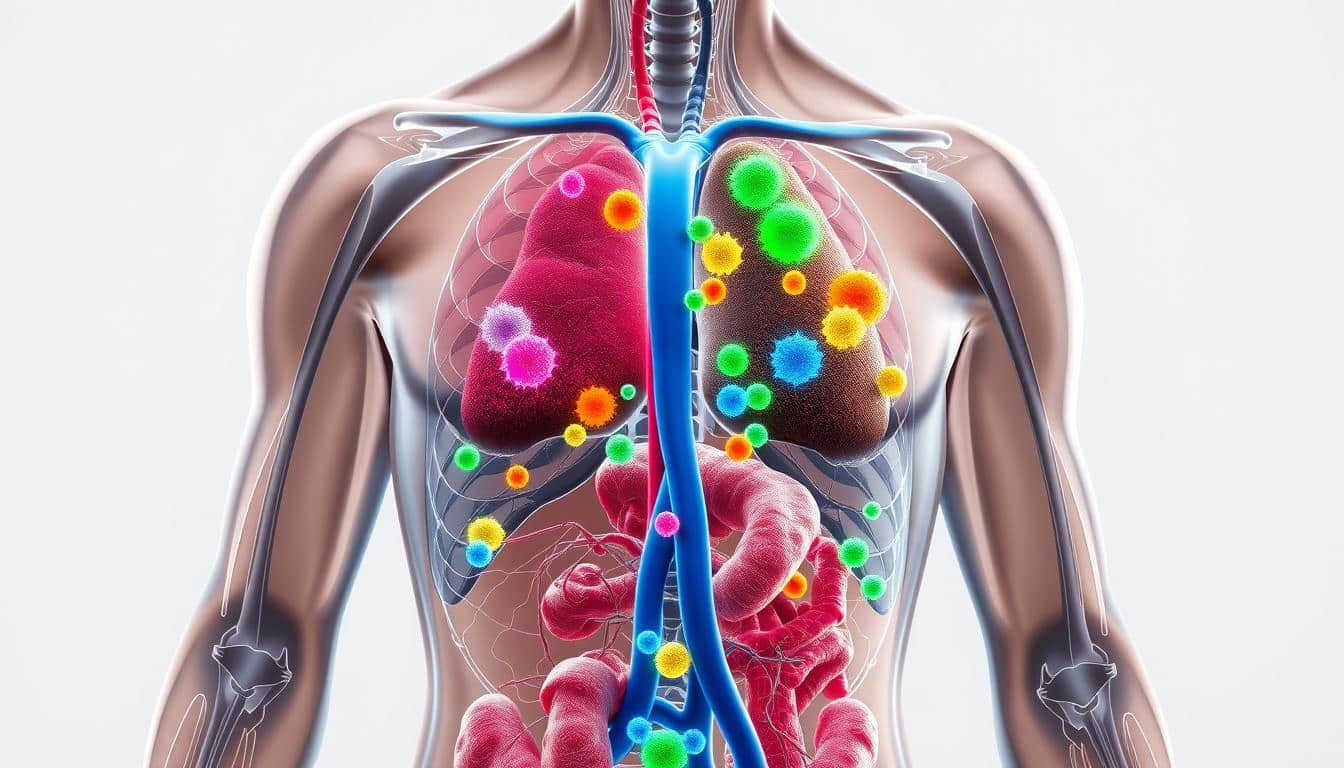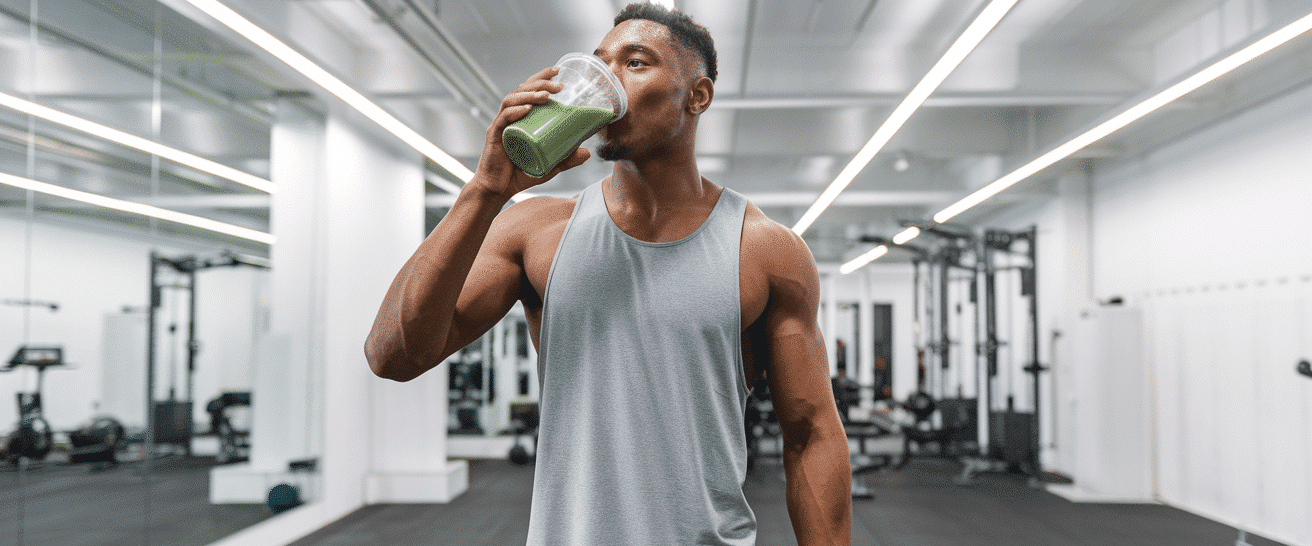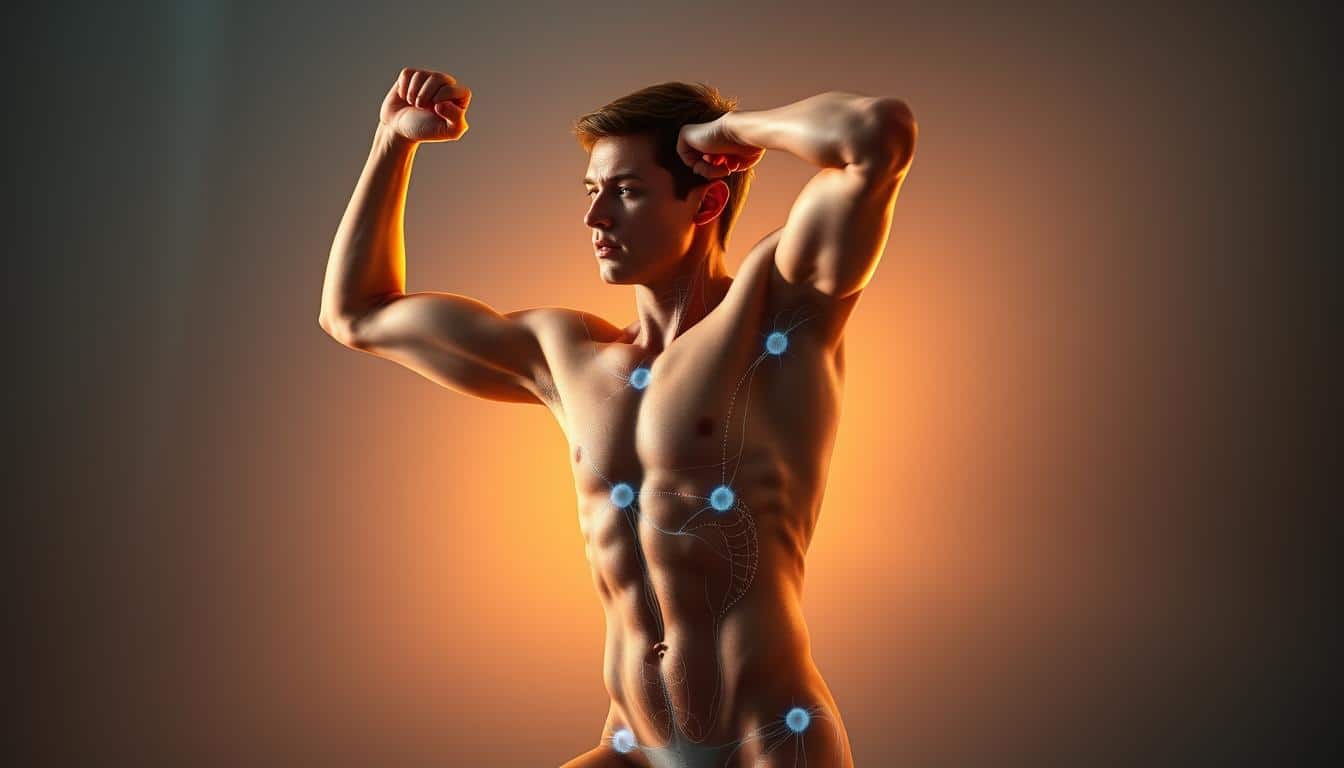Ever felt drained or cramped up mid-workout? It might not just be fatigue—your body’s electrolyte balance could be off. These tiny minerals, like sodium and potassium, are like your body’s electrical system, keeping muscles and nerves firing smoothly.
Whether you’re hitting the gym or training for a marathon, managing these nutrients is key. Ignoring them can lead to cramps, fatigue, or even a drop in performance. But don’t worry—there are simple steps you can take today to stay on top of your game.
From smart hydration to the right foods, we’ll show you how to keep your body fueled and ready for action. Let’s dive in and make your next workout your best one yet!
What Are Electrolytes and Why Are They Important?
Ever wondered why your energy dips or muscles cramp during intense activity? The answer lies in electrolytes. These tiny minerals are essential for keeping your body running smoothly, much like car battery fluid powers a vehicle.

Electrolytes are minerals that carry an electric charge. They play a vital role in body functions, from muscle contractions to nerve signals. Without them, your human body would struggle to perform even basic tasks.
The Role of Electrolytes in the Body
Think of electrolytes as your body’s internal wiring. Sodium helps maintain fluid levels, ensuring you stay hydrated. Magnesium supports nerve and muscles function, while calcium keeps blood pressure stable. Potassium, on the other hand, regulates your heart rhythm.
Key Electrolytes for Exercise Performance
When you’re active, your body loses these minerals through sweat. Sodium is crucial for water retention, especially during long runs. Calcium helps prevent cramps, like those pesky finger cramps during rock climbing. Magnesium aids recovery after intense workouts, such as CrossFit sessions. Potassium ensures your heart stays steady, even under stress.
To stay fueled, pack electrolyte-rich snacks like bananas, nuts, or yogurt in your gym bag. These small changes can make a big difference in how you feel and perform.
How Exercise Affects Electrolyte Balance
Have you ever noticed salt stains on your workout clothes? Those white marks are a sign of electrolyte loss, especially sodium. When you’re active, your body loses these essential minerals through sweat. The more intense the workout, the more you lose.
For example, during high-intensity sessions in hot humid conditions, you can lose up to 2,000mg of sodium per liter of sweat. Wearing heavy gear or training for long durations can also increase this loss. It’s not just about how much you sweat, but what’s in it.
Electrolyte Loss Through Sweat
Sweat isn’t just water—it’s packed with minerals like sodium, potassium, and magnesium. The amount you lose depends on factors like intensity, duration, and environment. A simple way to check your sweat rate is by looking at salt stains on a white t-shirt after a workout.
Factors That Increase Electrolyte Loss
Certain conditions can speed up mineral depletion. High temperatures, humidity, and intense exercise are obvious culprits. But did you know that caffeine, antihistamines, and even high-protein diets can also make you sweat more? Teenagers and athletes often need extra attention because their bodies lose minerals faster.
| Activity | Electrolyte Loss (Sodium) | Conditions |
|---|---|---|
| Spin Class | 500-1,000mg per hour | Indoor, moderate intensity |
| Hot Yoga | 1,000-2,000mg per hour | Hot humid, high intensity |
| Football Practice | 1,500-2,500mg per hour | Outdoor, heavy gear |
Signs of Electrolyte Imbalance During Workouts
Ever felt like your body is sending you warning signals mid-session? It’s not just about feeling tired—your body might be telling you something’s off. Recognizing these signs early can save you from bigger issues down the line.
Physical Symptoms to Watch For
Your body often gives clear hints when something’s wrong. Muscle cramps are a classic sign, especially in your calves or thighs. Cyclists swear by pickle juice to stop cramps in their tracks—it’s a quick fix worth trying.
Feeling unusually tired? Even a 2% fluid loss can cause a 10% drop in performance. Check your pee color—if it’s dark, you might be dehydrated. Post-Zumba headaches? Don’t ignore them; they’re a red flag.
Mental and Emotional Indicators
It’s not just your body—your brain can show signs too. Ever felt “hangry” mid-workout? That’s your body crying out for fuel. Irritability, brain fog, or mood swings are common when your system is out of sync.
Boxers often make the mistake of overhydrating before a fight, leading to imbalance. Balance tests, like standing on one leg, can help you gauge your body’s state. Listen to your body—it’s smarter than you think.
The Importance of Hydration for Electrolyte Balance
Have you ever felt sluggish or off during a workout? It might not just be fatigue—your body could be craving proper hydration. Staying hydrated is key to keeping your system running smoothly, especially when you’re active.
Water plays a vital role in maintaining your body’s functions. It helps transport nutrients, regulate temperature, and support muscle contractions. But when it comes to intense activity, water alone might not cut it.
How Water Supports Electrolyte Function
Water is the foundation of staying hydrated. It helps dissolve and transport essential minerals like sodium and potassium, which are crucial for nerve and muscle function. Without enough fluid, your body can’t perform at its best.
For example, adults should aim to drink 24oz of water two hours before a workout. This ensures your body starts hydrated and ready to go. But during long sessions, you might need more than just water.
When Water Alone Isn’t Enough
While water is essential, it doesn’t replace the minerals lost through sweat. For activities lasting over an hour, like marathons or cycling, you’ll need more. This is where electrolyte drinks come in handy.
Here’s a quick comparison of water vs. electrolyte drink absorption rates:
| Drink Type | Absorption Rate | Best For |
|---|---|---|
| Water | Fast | Short workouts, mild activity |
| Electrolyte Drink | Moderate | Long sessions, intense activity |
For recovery, chocolate milk is a great option. It provides a mix of protein, carbs, and minerals. Coconut water, while popular, often lacks enough sodium for intense workouts. If you’re looking for more options, check out our guide on top hydration drinks for athletes.
Remember, over-hydrating can be just as harmful as dehydration. Signs include nausea, headaches, and bloating. Listen to your body and adjust your intake based on your activity level and sweat rate.
Best Drinks to Maintain Electrolyte Balance
Ever found yourself reaching for a drink mid-session, unsure if it’s the right choice? The drinks you choose can make a big difference in how you feel and perform. Let’s break down the best options to keep your body fueled and ready.
Sports Drinks vs. Coconut Water
Sports drinks are a popular choice for athletes. They’re packed with minerals like sodium and potassium, which help replenish what you lose through sweat. For example, a 16oz bottle of Gatorade contains about 200mg of sodium, making it a solid option for intense activities.
Coconut water, on the other hand, is a natural alternative. It’s lower in sodium but rich in potassium. While it’s great for light workouts, it might not cut it for longer, more intense sessions. Learn more about the benefits of coconut water for athletes to see if it fits your needs.
Homemade Electrolyte Solutions
If you’re looking for a budget-friendly option, try making your own electrolyte drink. A simple mix of 1/2 tsp salt, lemon juice, and 1L water can do the trick. It’s not only cost-effective but also customizable to your taste.
Here are five flavor combos to try:
- Lemon and lime
- Orange and ginger
- Strawberry and mint
- Cucumber and basil
- Pineapple and coconut
Cyclists often avoid sugary drinks, opting for these homemade mixes instead. They’re light on the stomach and easy to carry during long rides.
Whether you choose a sports drink, coconut water, or a DIY mix, the key is to stay hydrated and replenish those essential minerals. Your body will thank you!
Foods That Help Restore Electrolytes
What’s the first thing you reach for after a workout? Your food choices can play a big role in how quickly you recover. Eating the right foods helps replenish essential minerals your body loses during activity.
High-Electrolyte Fruits and Vegetables
Fruits and veggies are packed with nutrients that support recovery. Bananas are a top choice for potassium, while spinach is rich in magnesium. Avocados are another great option, offering both potassium and healthy fats.
Here’s a quick list of high-electrolyte produce:
- Bananas (potassium)
- Spinach (magnesium)
- Oranges (calcium and potassium)
- Sweet potatoes (potassium)
- Cucumbers (hydration boost)
Protein and Dairy Sources for Electrolytes
Protein and dairy are excellent for recovery. Yogurt provides calcium, while salted nuts offer a mix of sodium and healthy fats. Greek yogurt is a double win—it’s high in protein and calcium.
Try these protein-packed options:
- Greek yogurt (calcium and protein)
- Salted almonds (sodium and magnesium)
- Cottage cheese (calcium and protein)
- Hard-boiled eggs (protein and sodium)
- Chicken breast (protein and potassium)
For a quick fix, create an “electrolyte plate” with a mix of these foods. Pair a banana with a handful of salted nuts and a cup of yogurt for a balanced recovery snack. If you’re on the go, pickles are a better sodium source than chips—they’re low in calories and easy to pack.
Need inspiration? Try this MMA fighter’s recovery smoothie: blend spinach, banana, Greek yogurt, and a pinch of salt. It’s quick, tasty, and packed with nutrients to help you bounce back faster.
Electrolyte Supplements: Are They Necessary?
Ever questioned if your routine needs a boost from supplements? While food and drinks can provide most of what your body needs, sometimes they’re not enough. Supplements can fill the gap, especially when you’re pushing your limits.
Studies show that supplements can make a real difference. For example, cyclists saw a 4% boost in power when using electrolyte-carb mixes. Even knee surgery patients reported less pain with these products. But when should you consider them, and how do you choose the right one?
When to Consider Supplements
Supplements are worth considering if you’re sweating heavily or training for long periods. If you’re an endurance athlete or someone who loses a lot of fluids, they can help maintain your levels. They’re also useful if you’re recovering from illness or surgery.
Here are some signs you might need them:
- Frequent muscle cramps or fatigue
- Dark urine or signs of dehydration
- Training in hot or humid conditions
If you’re unsure, consult a dietitian. They can help you decide if supplements fit your needs.
Choosing the Right Electrolyte Product
Not all supplements are created equal. Here’s how to pick the best one for your performance:
- Pill vs. Powder: Powders often absorb faster, but tablets are more convenient for on-the-go use.
- Check Labels: Avoid products with artificial colors or excessive sugar. Look for a mix of many electrolytes like sodium, potassium, and magnesium.
- Triathlete Tip: One athlete swears by a race-day stack of electrolyte tabs, energy gels, and water.
Beware of “mega-dose” marketing. More isn’t always better. Stick to recommended doses to avoid overloading your system.
How to Prevent Electrolyte Loss During Workouts
Struggling to keep up during intense activity? Your body might need more than water. Losing essential minerals through sweat can impact your performance. But with the right strategies, you can stay on top of your game.
Pre-Workout Hydration Tips
Start your session on the right foot by hydrating properly. Weigh yourself before and after your workout to calculate fluid loss. For every pound lost, drink 24oz of an electrolyte-rich fluid to replenish what’s missing.
Here’s a quick checklist for your gym bag if you’re heading to a hot humid yoga class:
- Electrolyte tablets or powder
- A reusable water bottle
- A small towel for sweat
- Light, breathable clothing
- A post-workout snack like salted nuts
Strategies for Long-Duration Exercise
For activities lasting over 90 minutes, timing is key. Start hydrating 2 hours before your session with 24oz of water. During the workout, sip an electrolyte drink every 15-20 minutes to maintain your levels.
Hikers in desert conditions swear by the “salty sweater” test. If your clothes have white salt stains, you’re losing more sodium than usual. Adjust your intake accordingly to avoid fatigue or cramps.
Morning vs. evening workouts also matter. In the morning, your body is naturally dehydrated, so drink extra water. In the evening, focus on replenishing what you’ve lost throughout the day.
By following these tips, you can prevent electrolyte loss and keep your body performing at its best, no matter the activity.
Recovering Electrolytes After a Workout
Feeling drained post-workout? It’s time to refuel the right way. Your body needs more than just water to recover. Proper hydration and nutrition can help restore electrolyte levels and get you back on track.
Post-Workout Hydration and Nutrition
After a tough session, your body craves nutrients to repair and recharge. Chocolate milk is a great option—it provides 8g of protein and essential minerals. Powerlifters often follow a post-sauna routine with a mix of fluids and snacks to recover faster.
Here’s a quick guide to recovery windows for different sports:
- Runners: Replenish within 30 minutes to 2 hours.
- Cyclists: Focus on hydration and carbs immediately after.
- Weightlifters: Pair protein with electrolytes for muscle repair.
Timing Your Electrolyte Intake
Timing matters when it comes to recovery. Drinking fluids right after your workout helps maintain blood pressure and supports your body’s functions. Avoid sugary drinks like beer—they can slow down recovery.
If you’re waking up with nighttime cramps, it’s a sign of imbalance. Check your hydration the next day by monitoring your urine color. Clear or light yellow means you’re on track.
By focusing on the right fluids and timing, you can bounce back faster and feel your best for your next session.
Common Mistakes to Avoid with Electrolyte Balance
Have you ever wondered why some athletes seem to bounce back faster than others? The answer often lies in how they manage their hydration and mineral intake. Avoiding common mistakes can make a big difference in your performance and recovery.
Overhydration and Its Risks
Drinking too much water might sound harmless, but it can lead to serious issues. Overhydration can dilute the sodium in your body, causing a condition called hyponatremia. This can result in nausea, headaches, and in severe cases, even high blood pressure or seizures.
An ER nurse shared that many marathoners end up in the emergency room due to overhydration. Cases of hyponatremia have increased by 50% among runners from 2002 to 2020. To avoid this, listen to your body and don’t force yourself to drink beyond your thirst.
Here are three common gym water bottle mistakes to avoid:
- Filling up a gallon jug and trying to finish it in one session.
- Ignoring signs of bloating or discomfort.
- Following the outdated “8 glasses a day” rule without considering your activity level.
Ignoring Individual Sweat Rates
Not everyone sweats the same way. Factors like genetics, environment, and activity type play a role. Ignoring your unique sweat rate can lead to imbalances, especially if you’re losing a lot of minerals through sweat.
For example, an office worker might need less hydration than a roofer working under the sun. Personalized sweat tests can help you understand your needs better. Here’s a simple way to calculate your sweat rate:
- Weigh yourself before and after your workout.
- For every pound lost, drink 16-24oz of fluid.
- Adjust based on the intensity and duration of your activity.
Comparing hydration needs for different activities:
| Activity | Hydration Needs | Tips |
|---|---|---|
| Office Work | Moderate | Drink water every hour, avoid sugary sports drinks. |
| Outdoor Labor | High | Use electrolyte-rich fluids and take frequent breaks. |
| Endurance Sports | Very High | Plan hydration and mineral intake with a dietitian. |
By understanding your body’s needs and avoiding these common mistakes, you can stay hydrated and perform at your best. Remember, it’s not just about drinking water—it’s about drinking the right amount for you.
Conclusion: Staying Balanced for Better Performance
Ready to take your workouts to the next level? Staying on top of your health and performance starts with understanding your body. Here are three key takeaways to keep in mind: hydrate smartly, fuel with the right foods, and listen to your body’s signals.
To track your progress, download our free sports progress tracker template. It’s a simple way to monitor your hydration and nutrition habits. Plus, take the sweat test challenge—weigh yourself before and after your next workout to see how much fluid you lose.
For personalized advice, check out the ISSA Nutritionist resources. They’re packed with tips to help you stay balanced and perform at your best. Your next workout win is just a step away—let’s make it happen!


